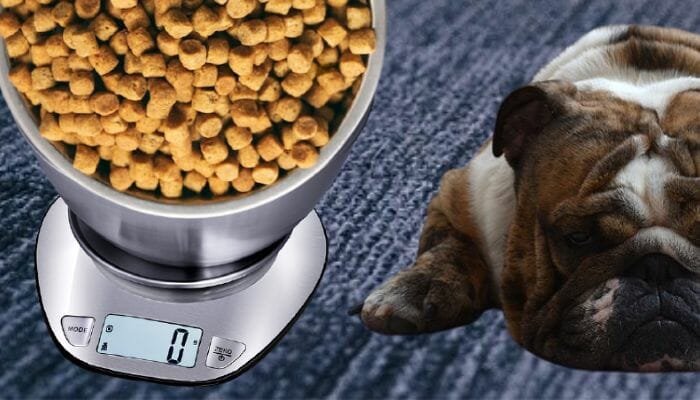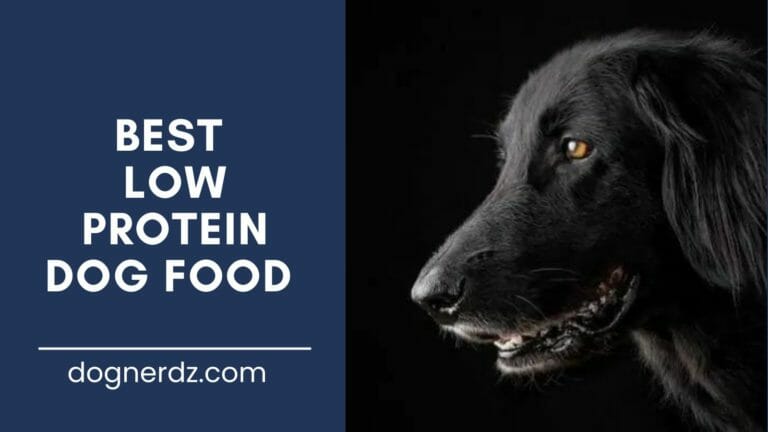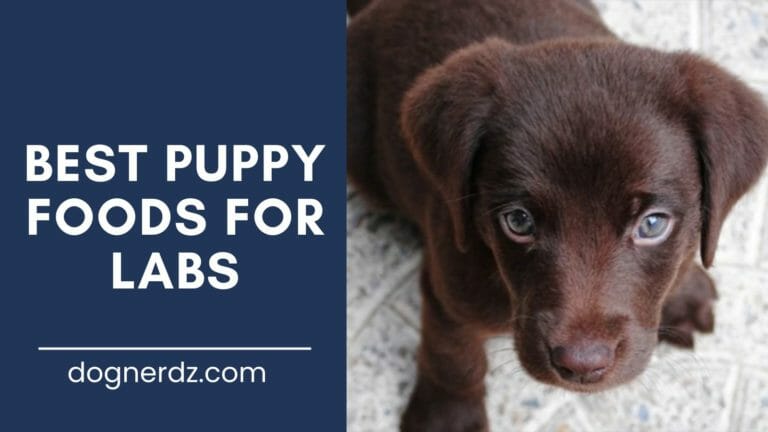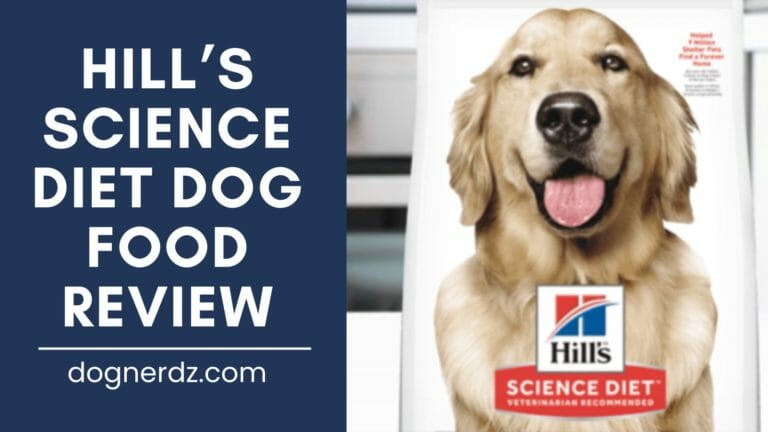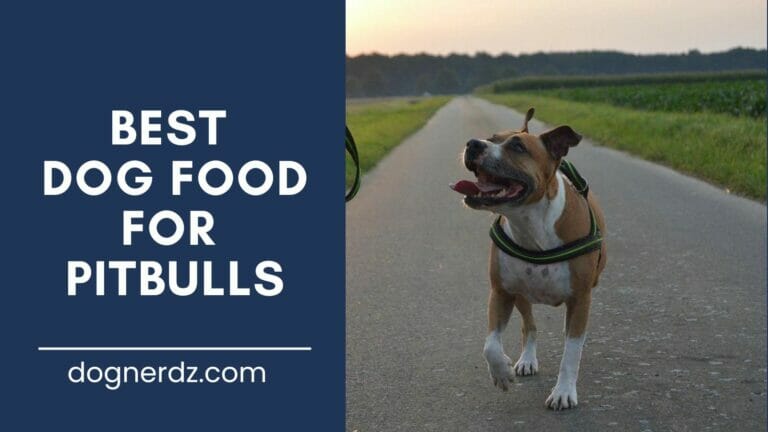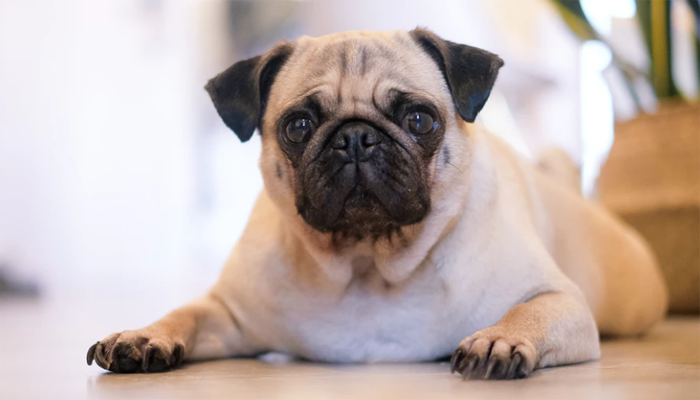How Many Cups of Dog Food in a Pound
Nailing the perfect feeding schedule for your furry friend feels like hitting a bullseye in the dark. It’s tricky!
As a pet parent, you not only have to consider the frequency and time of the feeding, but you must also consider how much to feed.
Most dog food kibble label how many cups of dog food is in the bag per pound, but the measurements will vary.
How can a pound be different from dog food to dog food and why do dog parents have to feed less of a brand compared to another? We’ll address all these questions today and more.
Quick Look
On average 3 cups of dog food equals a pound.
Table of Contents
How Much Food Does a Dog Need?
Let’s start with how much food your dog needs. The final answer will depend on the life stage, health, size, and energy level of your pup. There should be basic feeding guidelines labeled on the dog food bag, but that is a general recommendation. To be sure, you can always ask your vet.
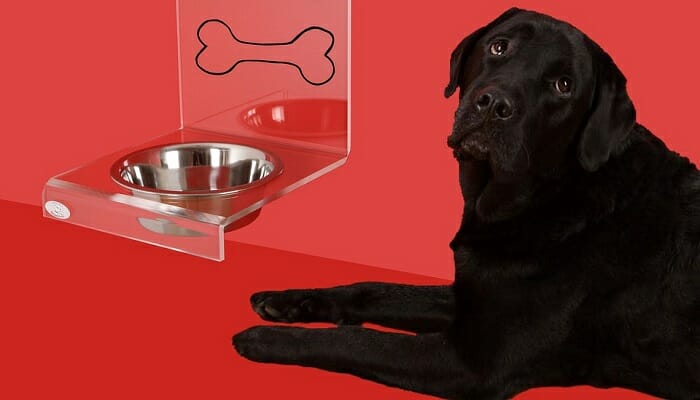
Let’s take Samson for example, he’s a pit bull terrier who loves to exercise and is as rambunctious as the craziest husky. He just turned one-year-old a month ago and is pushing almost 30 kg. He is a great example of a dog that will need a lot of food.
On the other hand, we have Bear, a tiny pomeranian who is still quite active at 2-years old but obviously lacks the body type and strength of his brother Samson. Bear is barely 10 pounds, which is considered a little large for a pom, and he spends his days following his owner around or being the perfect lap dog.
Since Bear is much smaller than a pit bull terrier and has lower energy levels, he won’t need as much food.
We Think You’ll Like: Facts About Pit Bulls
Then there is the type of diet to consider before you just go with the kibble food guidelines. There are some dogs that have delectable buffets consisting of not only kibble by wet dog food as well. For these dogs, dog parents must compensate for the added calories by reducing the dog food kibble amount.
How Many Cups of Dry Kibble in a Pound?
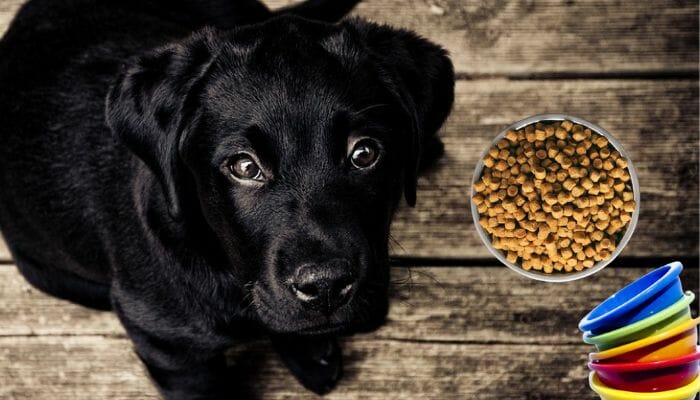
In general, a standard cup of dog food is around 5 ounces. If you purchase a pound of dog food from the store, you’re getting around 3 cups of dog food. When in doubt, you can always turn to your trusted kitchen scale.
Start by filling the cup you would use and placing the contents on the kitchen scale. Once you know how much the kibble in your cup weighs, you can start to calculate the cups in your bag of dog food. For example, if you purchase a 40-pound bag, that would mean there are 640 ounces. With that conversion, you can then take 640 and divide it by 5 to figure out the amount in the bag of dog food.
Why is it Important to Know Cup to Pound Ratio?
Why is it important to figure out these measurements instead of just going with the instructions? Having a concrete number can help you manage your dog’s diet. You will be able to avoid malnutrition and also reduce the risk of obesity by knowing the right amount.
Aside from knowing just how much to feed your pooch, you can also gauge the best bang for your buck in the dog food of your choice. For example, there may be one brand that offers more dog food per pound due to the weight and size of the kibble. However, we would never recommend compromising the quality for the price.
We Think You’ll Like: What to Feed Your Dog – Cheap, Healthy Brands and Recipes
Tips for Healthy Feeding
The Good and the Bad
Read the label. Understanding what ingredients make up the kibble your dog is ingesting could be the difference between a healthy dog and a sickly one. For starters, you should look for named protein sources as the first 5 ingredients at the very least. The ingredients should be as natural and whole as possible, hopefully, organic too.
Definitely avoid any artificial additives and preservatives, and this includes food coloring as well. Do not go for food that has an over-abundance of fillers, meals, and by-products. Know what’s harmful to dogs and check to see that the pet food is free of elements such as corn, starch, and soy.
Know What You’re Paying For
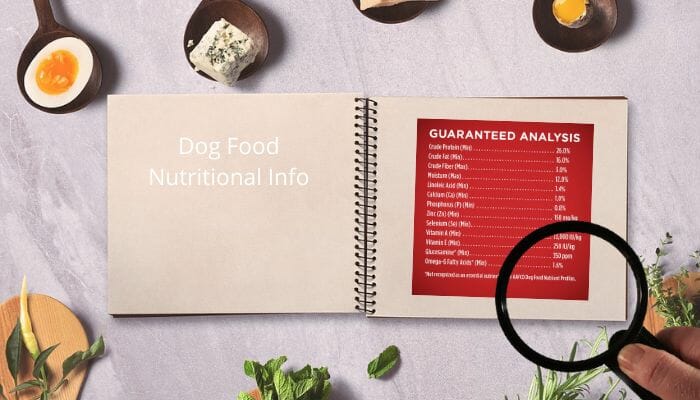
Dog food that is high in nutrition will provide more for your dog’s health in each cup. This results in dogs needing fewer cups of dog food for these nutrient-dense brands than ones that have lower-quality content. In the long run, this could mean saving some money.
You should know what you’re paying for after careful examination of the ingredients list. For example, Orijen is a famed brand for using whole and natural ingredients. As pet owners, we can clearly see why we are paying a premium for this dog food. However, random supermarket brands cost less than a fraction of the price, but many of them have corn listed as the first ingredient.
Check up on Your Dog
Taking your beloved fur babies in for a regular checkup once or twice a year will give you an accurate picture of his or her health profile. You don’t have to overdo it and bring your pooch in for every little thing, but having a thorough examination a couple of times a year plus some teeth and ear cleaning is recommended.
Make sure you ask your vet about your dog’s body profile including his weight, overall health, and maintenance tips. Judging by your dog’s appearance, your vet can easily tell you if he is under or overfed.
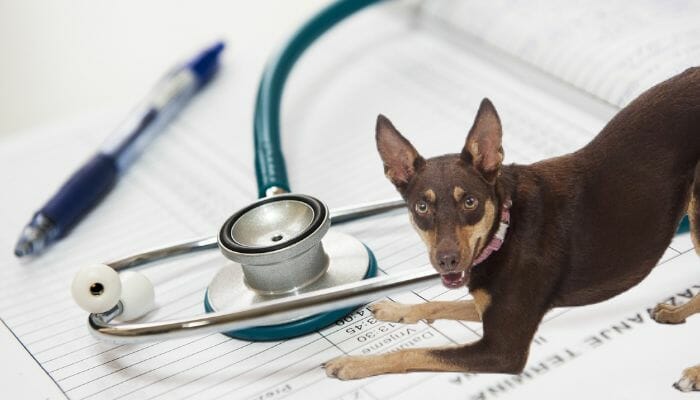
Don’t Forget the Treats
Sure, don’t forget to feed your dog treats as positive reinforcement, but we also remind you not to forget to factor in the extra calories. Doggy treats should be labeled clearly like pet food and list the calories per treat. Use those numbers to determine the right amount for your dog.
Slow it Down
Lots of dogs out there are fast eaters and clean out the bowl in a matter of minutes. Dogs like this require a slow feeder bowl. The raised grooves and ridges at the bottom of these feeders will require your dog to skillfully get to the kibble with his tongue. This extra action will greatly decrease the rate of eating.
Don’t think an avid eater is still hungry just because he polished off his portion quickly. Dogs who like to eat may look to their owner for more food but refrain from giving in to those puppy dog eyes.
Frequently Asked Questions
How many cups are in 4 pounds of dog food?
There are 5 ounces of dog food in each standard cup. There are 16 ounces in a pound, which means 4 pounds of dog food has 64 ounces. You then take 65 ounces and divide it by 5, which equals 13. Therefore, 13 cups of dog food are your answer. To find out how long the dog food lasts, you will need to figure out how many cups of dog food to feed your pooch a day.
How much does 1 cup of dog food weigh?
For a cup of dog food, you are looking at approximately 4 to 5 ounces. This will depend on the type of dog food and the cup you use. The feeding guidelines on the dog food package should clearly indicate how many cups are in the dog food to help you gauge the right amount.
How many cups should a 12-pound dog eat?
There are a variety of factors to consider when deciding how many cups of dog food a dog should eat, and weight is only one of them. Look at the size of your dog, the breed, the exercise frequency, and energy level. In general, a 12-pound dog with moderate exercise should have around 1 cup of food. The amount of food will increase incrementally by about one-third of a cup as you move up in weight class.
For example, a small dog is approximately within the 13-20 -pound weight range and would require 1 to 1/3 cups depending on which end of the scale he is on and his personal requirements. However, a medium dog, classified within the range of 21-35 pounds will require 1-1/3 to 2 cups.
How often should I feed my dog?
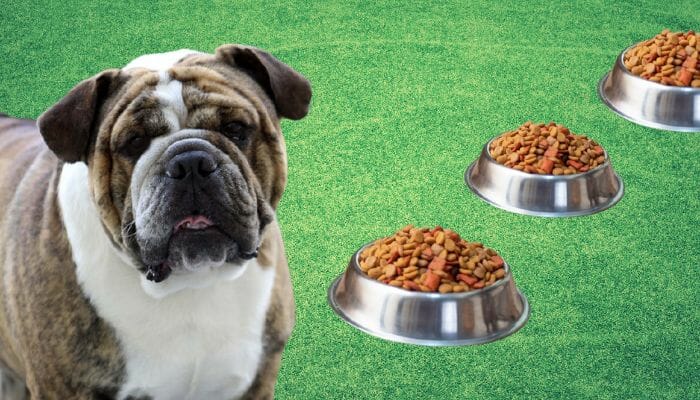
How often an owner feeds their dog depends on the age group and health of the dog. If your pooch is healthy, then experts recommend going by age group. Puppies require frequent feedings throughout the day, anywhere between 3-5 meals of lesser amounts. As they hit maturity around 1-2 years depending on the breed, the amount should decrease to around 2 times a day.
Why is my dog so hungry?
There are a variety of reasons why a dog is so hungry. Let’s start with the obvious, if he misses a meal, he will likely be very hungry until the next feeding. However, if your feeding schedule is regular as is his routine, then we would suggest looking at the food.
Nutrient-dense formulas satisfy your dog’s needs more effectively and keep them fuller for longer. However, if you go for a recipe with fillers, and not much substance, then your dog will likely be hungry within an hour or two, especially if it’s coupled with a lot of exercise.
Not to cause any alarm, but an unhealthy dog with an underlying issue could also be ravenous. If there is something in his system preventing him from absorbing all the nutrients, it could also lead to hunger.
Related: How to Tell if Your Dog is Hungry or Greedy?
How do I know if I am feeding my dog enough?
Let’s say you follow all the guidelines and your dog is healthy, dog owners still want to be sure they are feeding their dogs enough. Let’s take a look at what a healthy dog should look like.
It’s okay if you feel your dog’s ribs easily, but they shouldn’t be immediately visible. You should also be able to see a defined waist and abdomen. If the ribs, abs, and waist are very clearly defined, then chances are your dog is underweight. The opposite is true if your dog exhibits no visible definition at all.
Conclusion
Understanding the mathematics of how many cups of dog food there is in a pound will allow you to have more control over feeding portions and maybe even your purse strings. It’s important to also realize why it’s vital to feed your dog the right amount and at the right time.
When in doubt, always consult with your vet. Just because your pooch falls under a weight category, it doesn’t mean he automatically requires the same amount of food as the next dog. Factors such as energy level and health conditions will influence how much dog food you feed.
Did You Know?
The more vivid and delicious-looking the dog food seems to you, the more unhealthy it is for your dog. Of course, this is a generalization, but dog kibble with red, orange, and yellow-colored pieces will definitely be less healthy than one of uniform color. This is because the colorful pet food is full of artificial coloring, which is only used to entice you to purchase it. It does nothing whatsoever for your dog’s health.
Expert Tip
Knowing the right amount is not enough, you must also be consistent. It’s easier to tell if your dog may be sick from examining consistently sized cups of dog food portions.
Related: How to Measure Dog Food Portions

